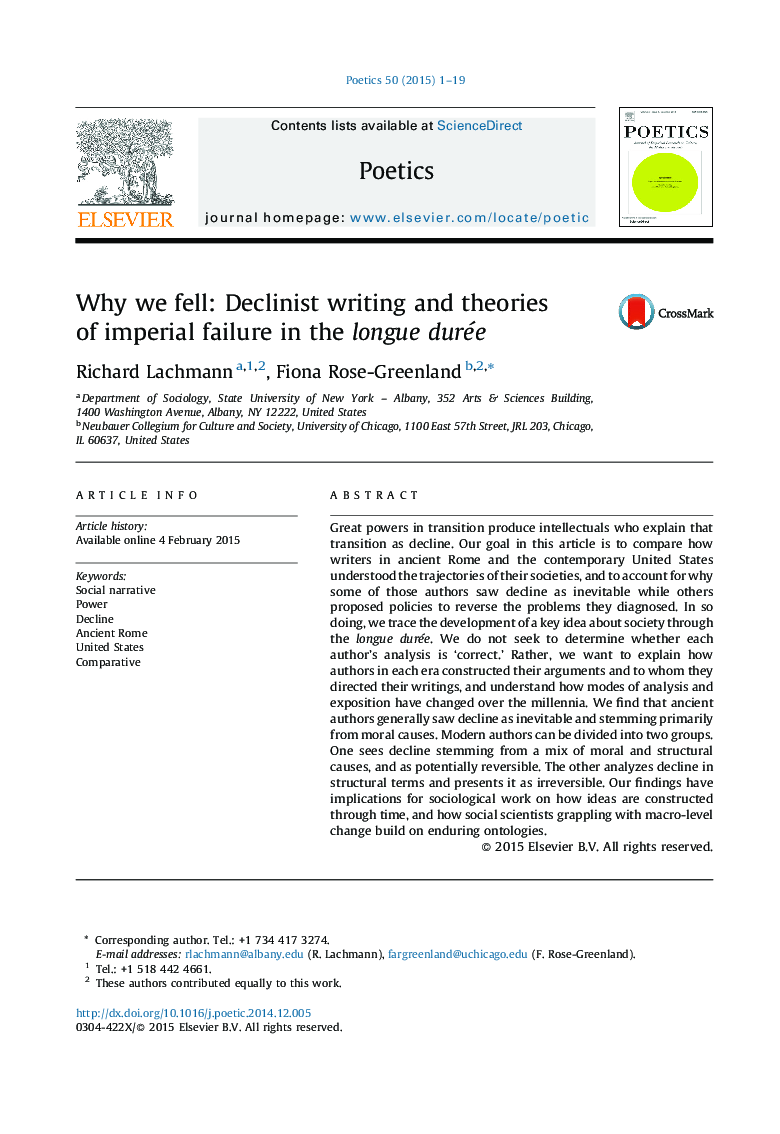| Article ID | Journal | Published Year | Pages | File Type |
|---|---|---|---|---|
| 1128255 | Poetics | 2015 | 19 Pages |
•We compare explanations of decline by ancient Romans and contemporary Americans.•We identify a series of cultural and social tropes that recur in declinist texts.•Roman declinist writers emphasized moral causes and saw decline as inevitable.•Modern authors emphasize structural forces along with moral causes.•Audience differences account for some of the differences in declinist tracts.
Great powers in transition produce intellectuals who explain that transition as decline. Our goal in this article is to compare how writers in ancient Rome and the contemporary United States understood the trajectories of their societies, and to account for why some of those authors saw decline as inevitable while others proposed policies to reverse the problems they diagnosed. In so doing, we trace the development of a key idea about society through the longue durée. We do not seek to determine whether each author's analysis is ‘correct.’ Rather, we want to explain how authors in each era constructed their arguments and to whom they directed their writings, and understand how modes of analysis and exposition have changed over the millennia. We find that ancient authors generally saw decline as inevitable and stemming primarily from moral causes. Modern authors can be divided into two groups. One sees decline stemming from a mix of moral and structural causes, and as potentially reversible. The other analyzes decline in structural terms and presents it as irreversible. Our findings have implications for sociological work on how ideas are constructed through time, and how social scientists grappling with macro-level change build on enduring ontologies.
